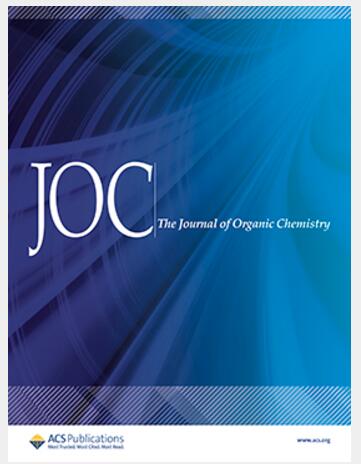立体选择性底物和试剂控制锂-硼化化学的发展。
IF 3.6
2区 化学
Q1 CHEMISTRY, ORGANIC
引用次数: 0
摘要
烯丙醇是基于聚酮的天然产物合成中的一个特殊基序,以立体选择的方式获得它们的新方法受到高度追捧。为了实现这一目标,我们发现使用手性聚酮片段可以在没有sparteine的情况下进行hoppe - mattson - aggarwal重排,具有高收率和非对映选择性,使该方案成为现有方法的极有价值的替代方案。研究了具有不同保护和导向基团的各种立体二联体和三联体,以确定它们的底物诱导。大多数强烈的固有感应归因于位阻效应或位阻效应和电子效应的结合。立体化学结果可以通过(基于dft的)构象分析和felkin类模型来解释,允许为底物和试剂控制的锂化-硼化化学创建指导流程图。本文章由计算机程序翻译,如有差异,请以英文原文为准。
The Development of Stereoselective Substrate and Reagent-Controlled Lithiation-Borylation Chemistry.
Allylic alcohols are a privileged motif in polyketide-based natural product synthesis, and new methods that access them in a stereoselective fashion are highly sought after. Toward this goal, we found that the use of chiral polyketide fragments allows for performing the Hoppe-Matteson-Aggarwal rearrangement in the absence of sparteine with high yields and diastereoselectivities, rendering this protocol a highly valuable alternative to existing methods. Various stereodyads and -triads bearing different protecting and directing groups were investigated to determine their substrate induction. The mostly strong inherent induction was attributed to either steric or a combination of steric and electronic effects. The stereochemical outcome could be explained by (DFT-based) conformational analysis and a Felkin-like model, allowing guidance flowcharts to be created for the substrate- and reagent-controlled lithiation-borylation chemistry.
求助全文
通过发布文献求助,成功后即可免费获取论文全文。
去求助
来源期刊

Journal of Organic Chemistry
化学-有机化学
CiteScore
6.20
自引率
11.10%
发文量
1467
审稿时长
2 months
期刊介绍:
Journal of Organic Chemistry welcomes original contributions of fundamental research in all branches of the theory and practice of organic chemistry. In selecting manuscripts for publication, the editors place emphasis on the quality and novelty of the work, as well as the breadth of interest to the organic chemistry community.
 求助内容:
求助内容: 应助结果提醒方式:
应助结果提醒方式:


